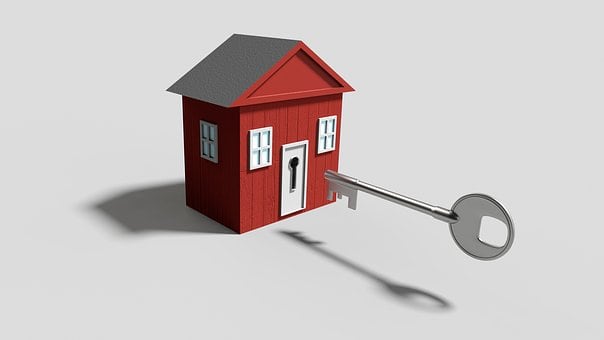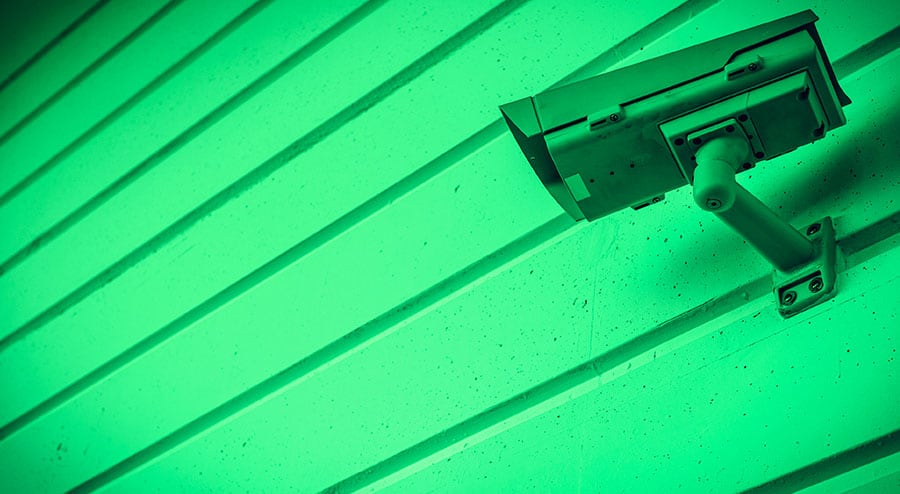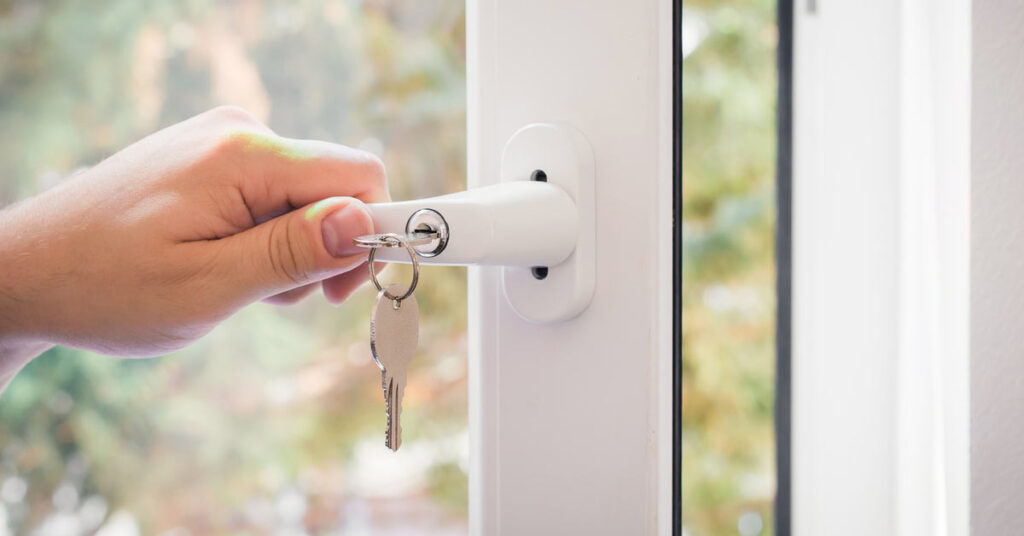Our money and our valuables mean everything to us. However, identity theft and home intruders are on the rise. According to the FBI’s Uniform Crime Reporting Program, almost 6,000 burglaries occur in the U.S. every single day.
Those burglaries add up to approximately $4.6 billion in property loss on a yearly basis. There’s no doubt that protecting your property from burglary is important, but the costs of protection can get out of hand in some cases.
However, you don’t have to destroy your budget to get effective protection for your home with an alarm system that has all the bells and whistles and an electric garage door and fully integrated burglar alarm security. Improving crime prevention by stopping criminals entering our property is key. Simply adding a few extra locks to your doors and windows will start to keep those thieves out—and may reduce your home insurance premiums.
Many of the best security providers offer budget-friendly packages to fit the smallest of budgets. These may not include all the fancy bells and whistles like home automation, wireless cameras, and phone applications. However, they will give you the protection you need.
There are a number of DIY alarm systems and other small things you can do to protect your property from burglary and criminals on the cheap. Before we look at some of your best options, there are a few things you should know about the differences between different security systems.
Monitored Vs. Self-Monitored Security Systems
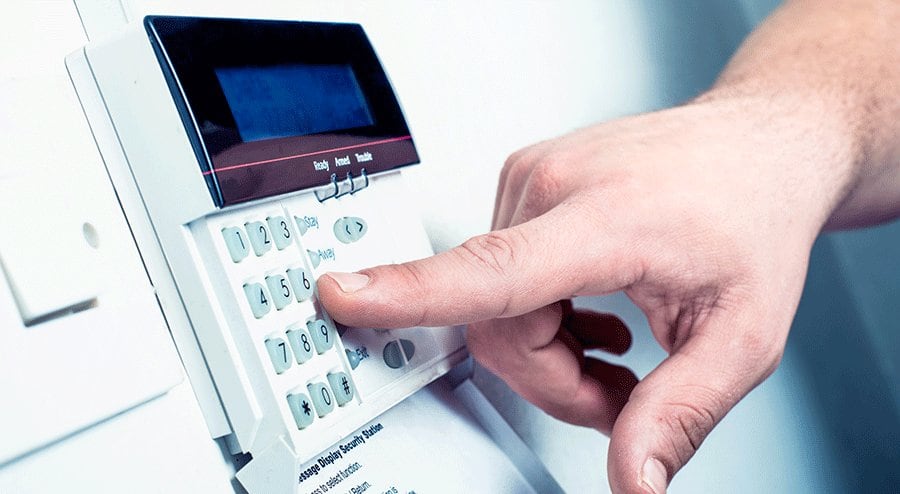
Understanding the difference between a monitored and a self-monitored system is essential to making the right decision for crime prevention.
Monitored Security Systems
Monitored security systems give you peace of mind while they help you monitor your home. They connect to a central station that will contact you (and the authorities if needed) if your security system is ever triggered.
Self-Monitored Security Systems
Self-monitored systems do not connect to a third-party monitor. They send you a notice directly when someone triggers the security system. This could be in the form of a phone alert, loud alarm or other direct signaling function.
Types of Monitoring

Landline Monitoring
Landline is the lowest cost monitoring option. It uses your current landline to communicate, send alerts and trigger alarms. On the other hand, because a potential intruder can disarm the entire system by cutting your phone line, landline monitoring is not as secure as some of the other types of monitoring.

Internet Monitoring
Monitored via an Internet connection, these systems are more difficult to disarm than landline systems. However, an intruder could still cut your WiFi cards or disconnect your power, so they’re not perfectly secure. Some of these systems offer a 24-hour battery backup to stay online when the power goes out.

Cellular Monitoring
Systems with cellular monitoring provide the highest level of security for your home. They communicate with the central station through a cellular network. The networks these systems use different from the ones your phone uses, so you shouldn’t worry about dropped calls or other issues on your smartphone. This type of monitoring is typically the most expensive option.
Budget-Friendly Security Systems
Now that you understand some of the important differences between security systems, here are a few solid options that won’t blow your budget.
Economical Self-Monitored Systems
Because you are responsible for monitoring these security systems, there is no need for a monthly service fee. They don’t usually require contracts, and the equipment charges are typically the only costs for these systems.
iSmartAlarm
The most budget-friendly package with iSmartAlarm costs $199, but there are more expensive options available. All of the equipment in this package comes with a one-year warranty, and you can monitor the system through a smartphone app. The package includes one motion sensor, two remote tags, two window/door sensors and a CubeOne.
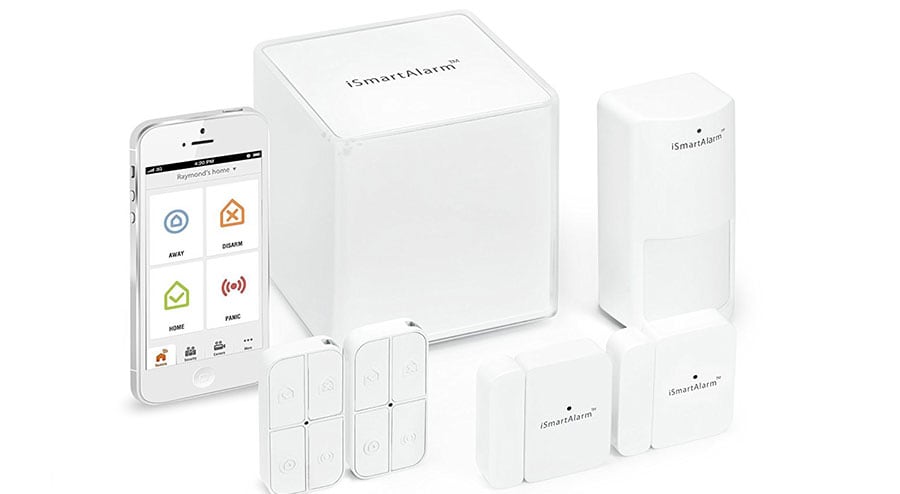
SimpliSafe
Simplisafe offers a great security system with a 3-year equipment warranty for $234.99. You can add monitoring for $14.99 per month, so this can be a great choice for people who aren’t really sure whether they want central monitoring or not.
You can always try the monitoring out for a few months and, if you don’t like it, you can cancel it. This system includes a base station, one keypad, one remote, one motion sensor, and one door sensor.
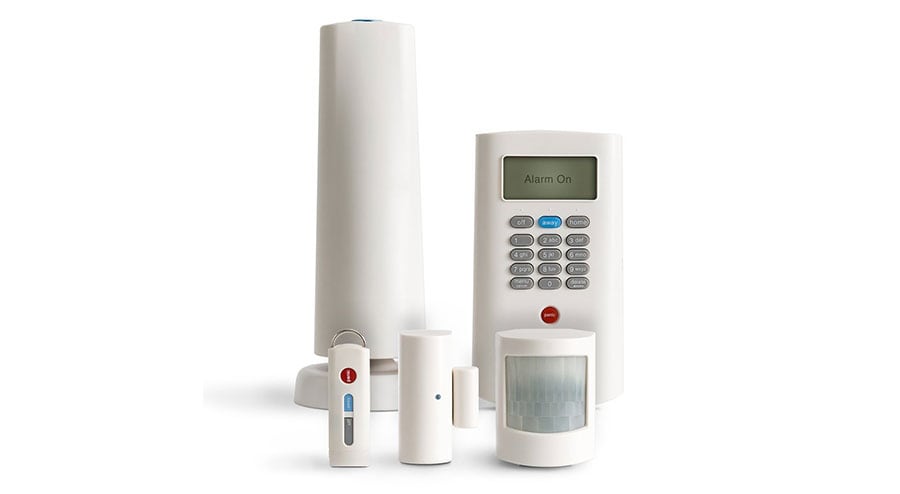
Low Cost Monitored Systems
If you do want a monitored system, there are some great options out there that will keep your costs low.
The “Copper Plan” with Protect America costs only $19.99 per month. Although there are no installation, activation or equipment fees, you do need to sign a 36-month contract. If your equipment ever breaks, Protect America offers a lifetime warranty so they will replace it.
This is a landline monitoring system, so you need a landline phone. It includes one Simon XT panel, one motion sensor, and three window/door sensors.
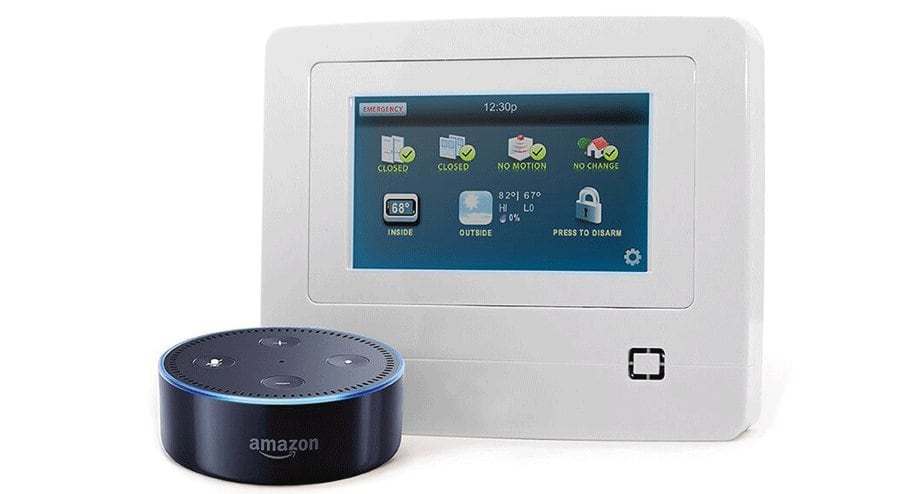
LiveWatch
LiveWatch offers two great equipment packages that offer 24/7 cellular monitoring at $29.95 per month. The equipment comes with a 2-year warranty, and there are no contracts so you can change your mind whenever you want.
- Comes with: one control panel, one key fob, a motion sensor, and two door sensors
- $99 for equipment, $19.95 fee for activation
- Plug&Protect Basic
- Plug&Protect IQ
- $99 for equipment, $19.95 fee for activation
- Comes with: one key fob, one motion sensor, two door sensors, and a 7” touch-screen smart panel with a camera
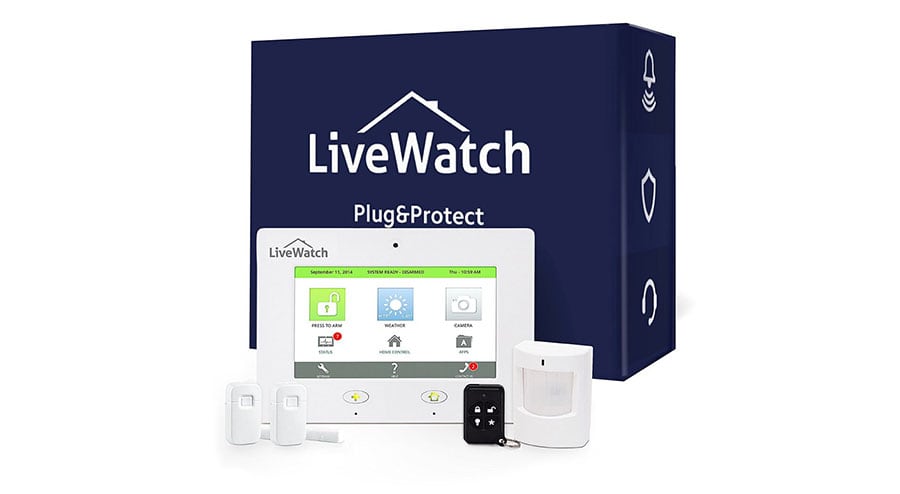
LifeShield
LifeShield offers a package called “Security Essentials” for $29.99 per month. You will need to sign a 36-month agreement that comes with fees for early cancellation. The company, which is now owned by DirecTV, provides 24/7 Internet monitoring with phone backup.
During the contract period, LifeShield will replace any broken equipment free of charge. The package comes with a keychain remote, four window/door sensors, a keypad, a touchpad, and a secure base.
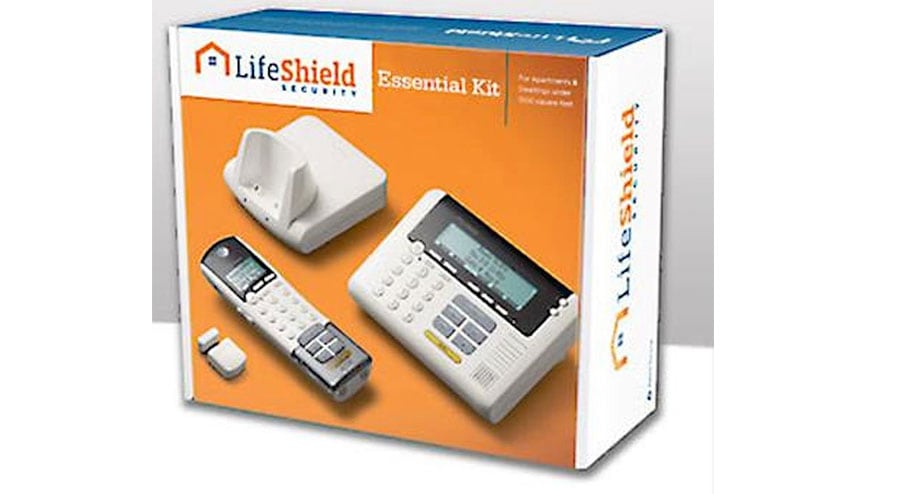
Other Security Products Under $20
If you’re not ready to spend the money on a complete security system yet, these products can provide some solid options:
Doberman Entry Defense Alarm
Believe it or not, about 30% of home burglaries start with an unlocked door or window. We’re all human, and we all forget to lock up sometimes. When we do, this alarm provides some protection with its 100-decibel siren.
This alarm gets very good reviews and its siren can be heard from a mile away. It is also extremely easy to install.
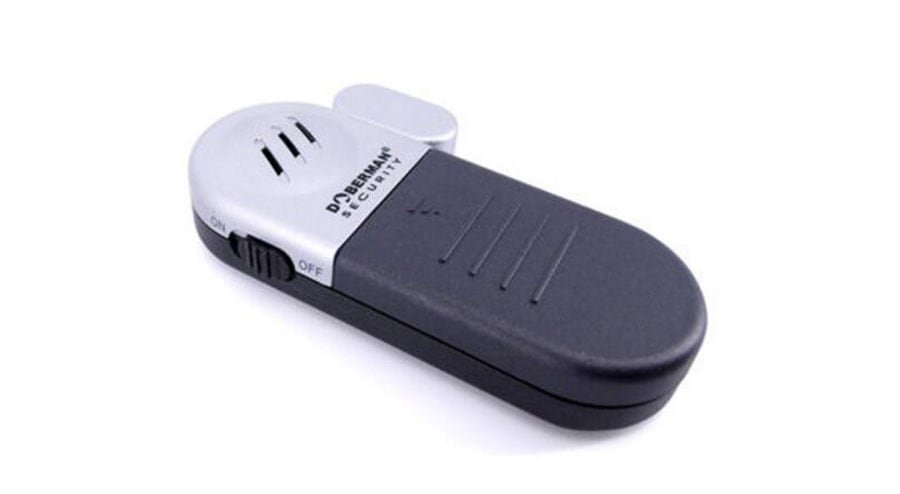
UniquExceptional Fake Security Camera
Burglars don’t like to be watched so, if they see a security camera, chances are good that they’ll go away. This fake “camera” is designed to look as real as possible to make potential intruders think that you have a high-tech security system.
These fake security cameras have realistic infrared lighting and even a noticeable video cable. They can last for up to a year on two AA batteries, work on the exterior or interior of your home, and come backed by thousands of great reviews.
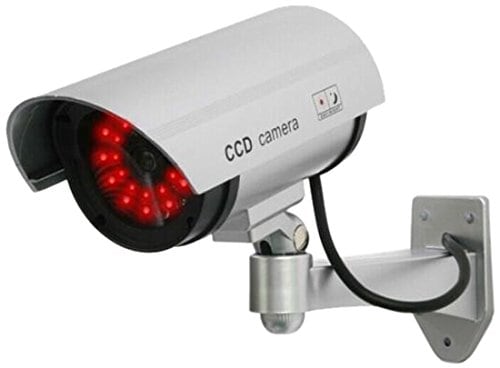
GE Personal Security Window/Door Alarm
Windows and doors are hotspots for home invasions because they’re often left unlocked and, even when they’re locked, most can be pried open fairly easily. The GE alarms till trigger an ear-piercing siren if someone tries to open a window or door.
These alarms provide some of the best value on the market at four alarms under $20. They come with a convenient on/off/chime mode, feature a 120-decibel siren, and have over a thousand positive reviews on Amazon.

Prime-Line Door Re-in-forcer
Deadbolts can last a long a time, but they’re not worth much if the rest of your door remains vulnerable. This strike plate replaces your standard deadbolt strike-and-latch to provide extra protection from forcible entry.
It comes with long screws to increase durability and strength. Customers have given this product some great reviews, and the plate’s steel construction holds up against a lot of force. It also comes with a brass finish to provide a better look.
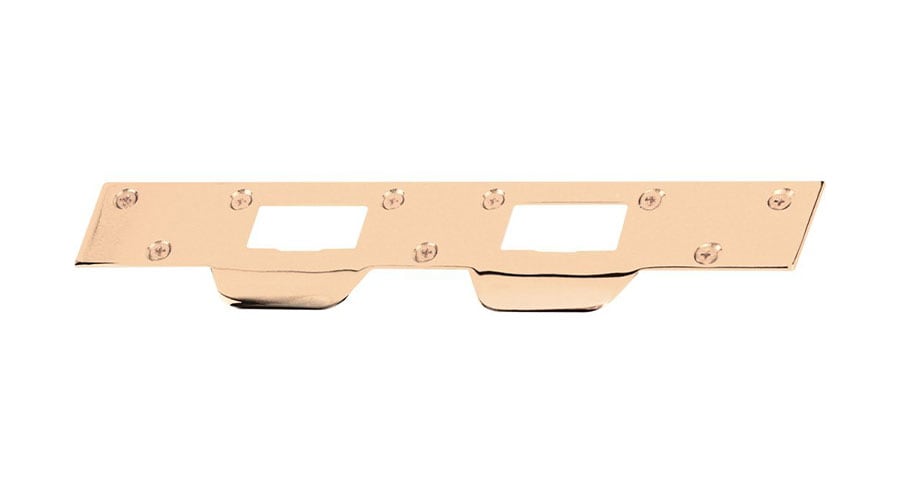
Quick Tips to Protect Your Home at Little to No Expense
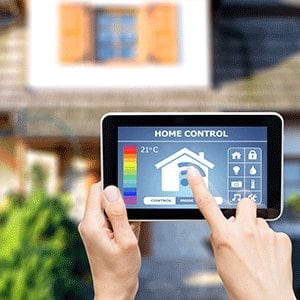
Do a Home Security Assessment
Put yourself in the shoes of a potential burglar. Walk around the outside of your home and look for areas of weakness. Do your windows look like they could easily be pried open?
Is it easy to see your expensive furniture, artwork, or electronics through your windows or doors? Things like this can make a big difference in deterring burglars from targeting your property.
There’s no need to do a complete redecoration of your home, but if you can add a curtain or move a piece of furniture a foot out of view, you’ve made a big improvement to your home’s protection.

Maintain Your Property
Burglars like overgrown shrubs and trees because they provide great hiding spots. A well-maintained property makes it more difficult to enter your home undetected.

Talk to Your Neighbors
Tight-knit communities often have lower crime rates because everyone tends to look out for one another. If your neighbors no your family, your routines, and your common guests, they can help to spot strangers with an eye on your home.
Protection During Your Vacation
If you’re leaving for vacation, there are several things you can do to add protection:
- Ensure All Doors & Windows Are Locked
- Tell Your Trusted Neighbor That You’ll Be Away
- Leave A Few Lights On Around The House / Put Outdoor Lights On Timers
- Leave A Radio On Inside The House
- Never Advertise Your Trip On The Internet!
Burglary is a fact of life for homeowners in the US. You can’t completely avoid the chance that a home invasion could occur, but you can reduce that risk significantly without killing your budget!
Sources
- https://ucr.fbi.gov/crime-in-the-u.s/2010/crime-in-the-u.s.-2010/property-crime/burglarymain
- https://www.buzzfeed.com/peggy/18-cheap-and-effective-tricks-to-deter-burglars
- https://www.safety.com/8-ways-to-burglar-proof-your-home-on-the-cheap/
- https://lifehacker.com/5887264/how-to-cleverly-secure-your-home-against-intruders
- https://www.creditdonkey.com/prevent-burglary.html


